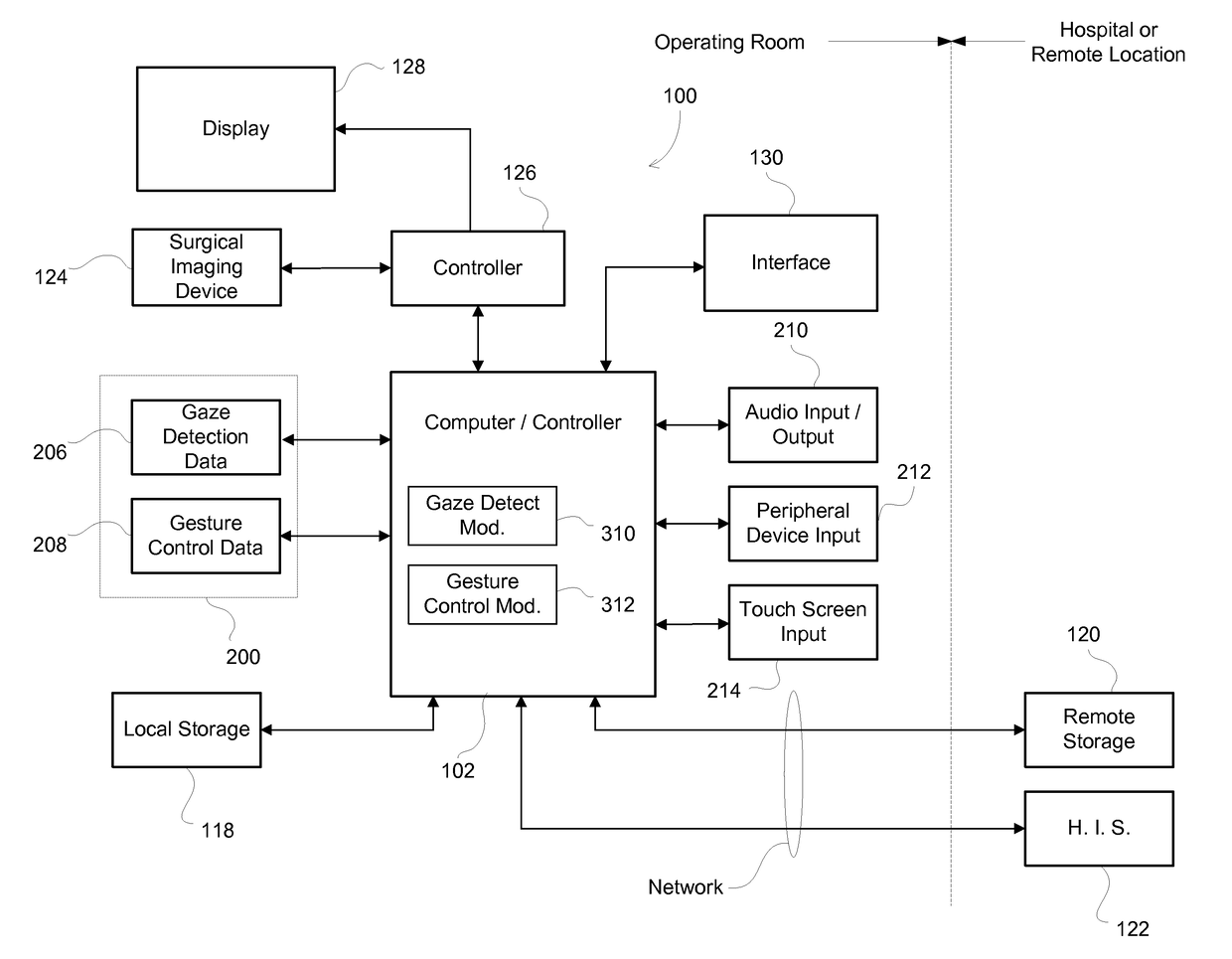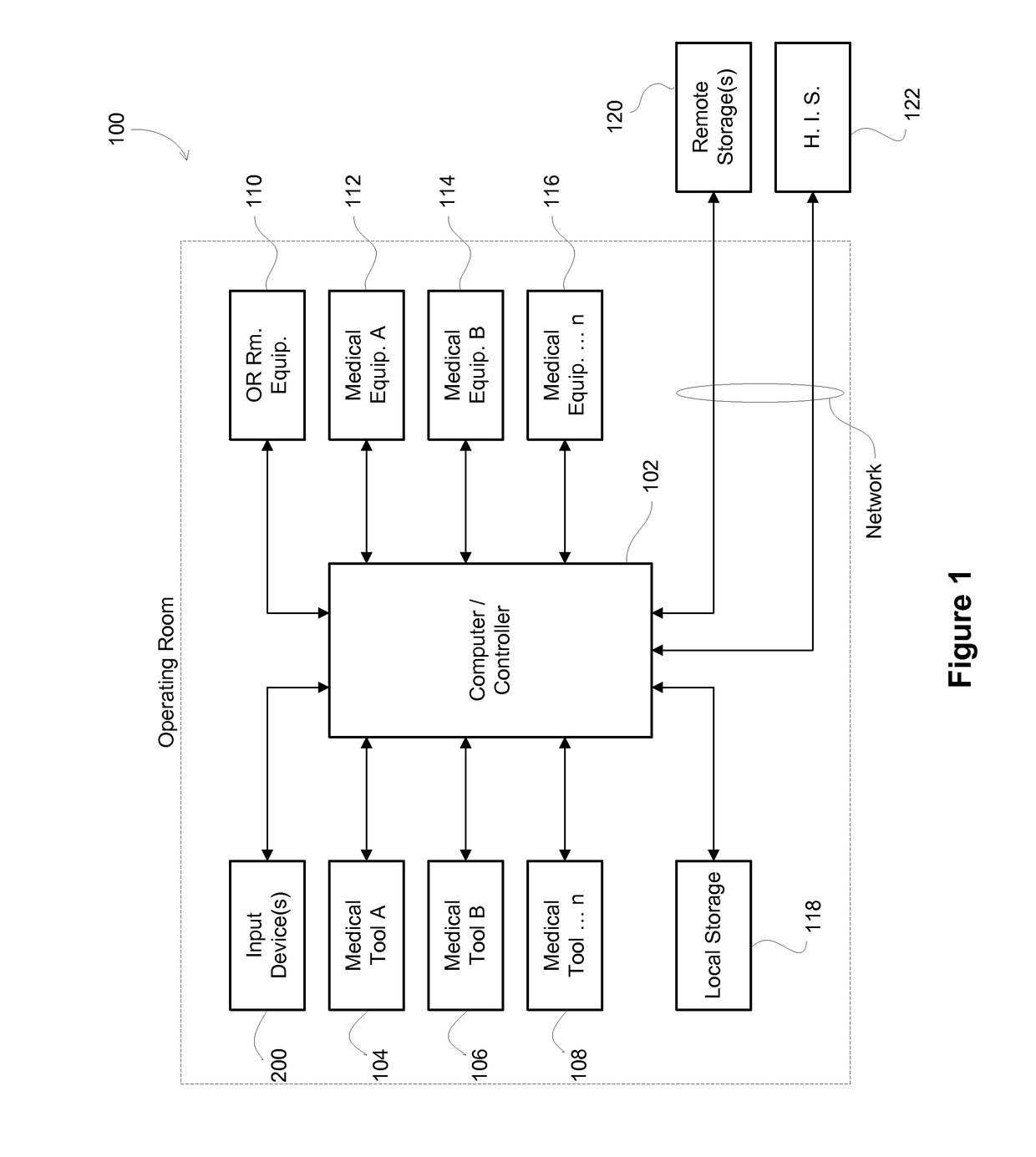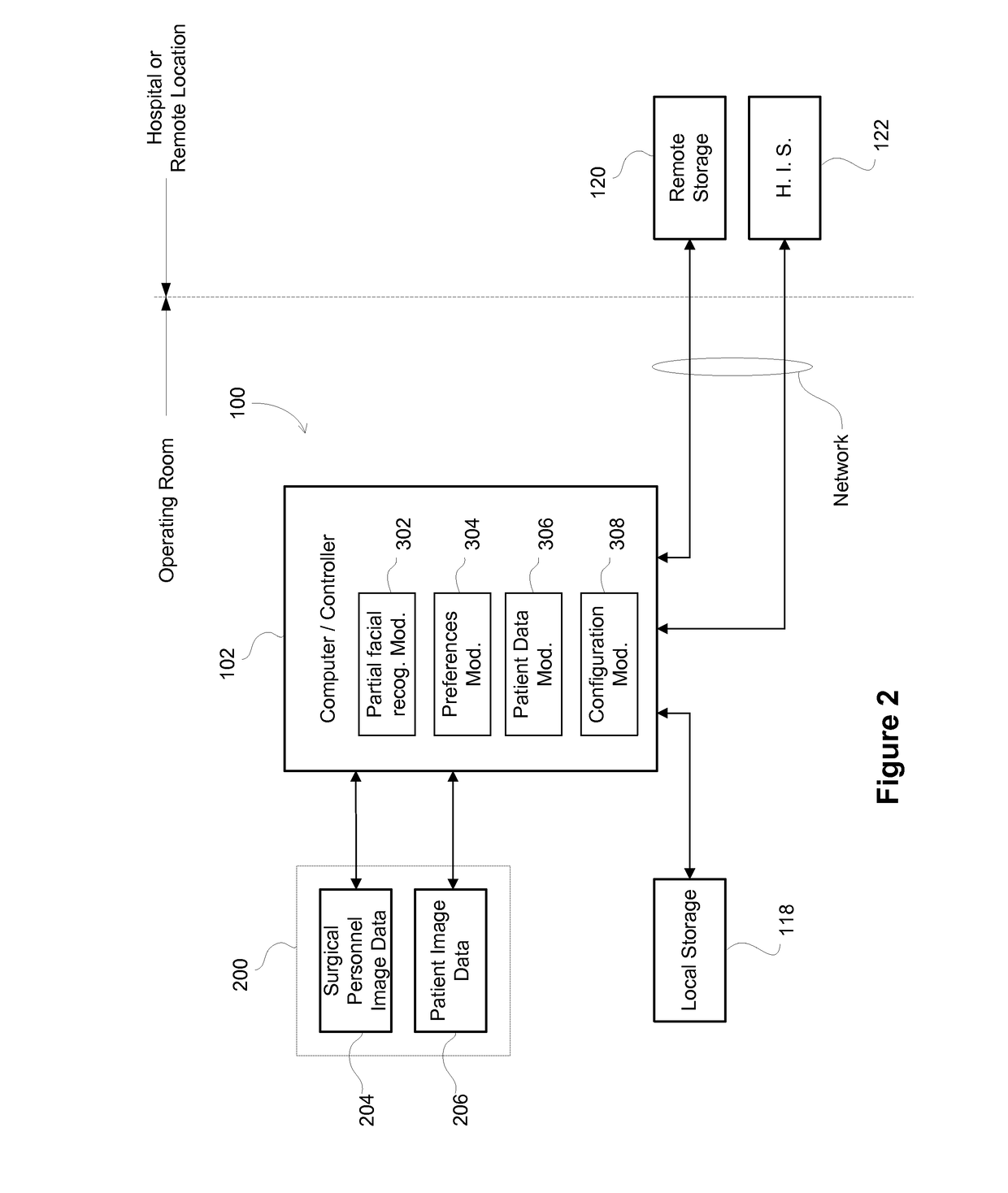Partial Facial Recognition And Gaze Detection For A Medical System
a medical system and facial recognition technology, applied in the field of medical systems, can solve the problems of reducing the efficiency of medical staff, and reducing the number of patients, so as to achieve the effect of fewer personnel
- Summary
- Abstract
- Description
- Claims
- Application Information
AI Technical Summary
Benefits of technology
Problems solved by technology
Method used
Image
Examples
Embodiment Construction
[0037]Referring now to the drawings, wherein like reference numerals designate corresponding structure throughout the views.
[0038]FIG. 1 is a block diagram of a medical system 100 that may be located in, for example, an operating room. While the examples provided are described in connection with an operating room in a hospital, it will be understood that medical system 100 may be used in many differing environments as desired.
[0039]A computer 102 is depicted in FIG. 1 that includes a number of connected medical tools 104, 106, 108. These tools may be connected to computer 102 via various controllers and the like, which are presumed to be incorporated in the various devices listed as “Medical Tool A”, “Medical Tool B” and “Medical Tool n.” For example, the medical tools may comprise a cutting device, such as a bi-polar or rotating cutting tool, or may comprise a suction device for aspirating debris from a surgical location, or the like. It will be understood that these examples compr...
PUM
 Login to View More
Login to View More Abstract
Description
Claims
Application Information
 Login to View More
Login to View More - R&D
- Intellectual Property
- Life Sciences
- Materials
- Tech Scout
- Unparalleled Data Quality
- Higher Quality Content
- 60% Fewer Hallucinations
Browse by: Latest US Patents, China's latest patents, Technical Efficacy Thesaurus, Application Domain, Technology Topic, Popular Technical Reports.
© 2025 PatSnap. All rights reserved.Legal|Privacy policy|Modern Slavery Act Transparency Statement|Sitemap|About US| Contact US: help@patsnap.com



